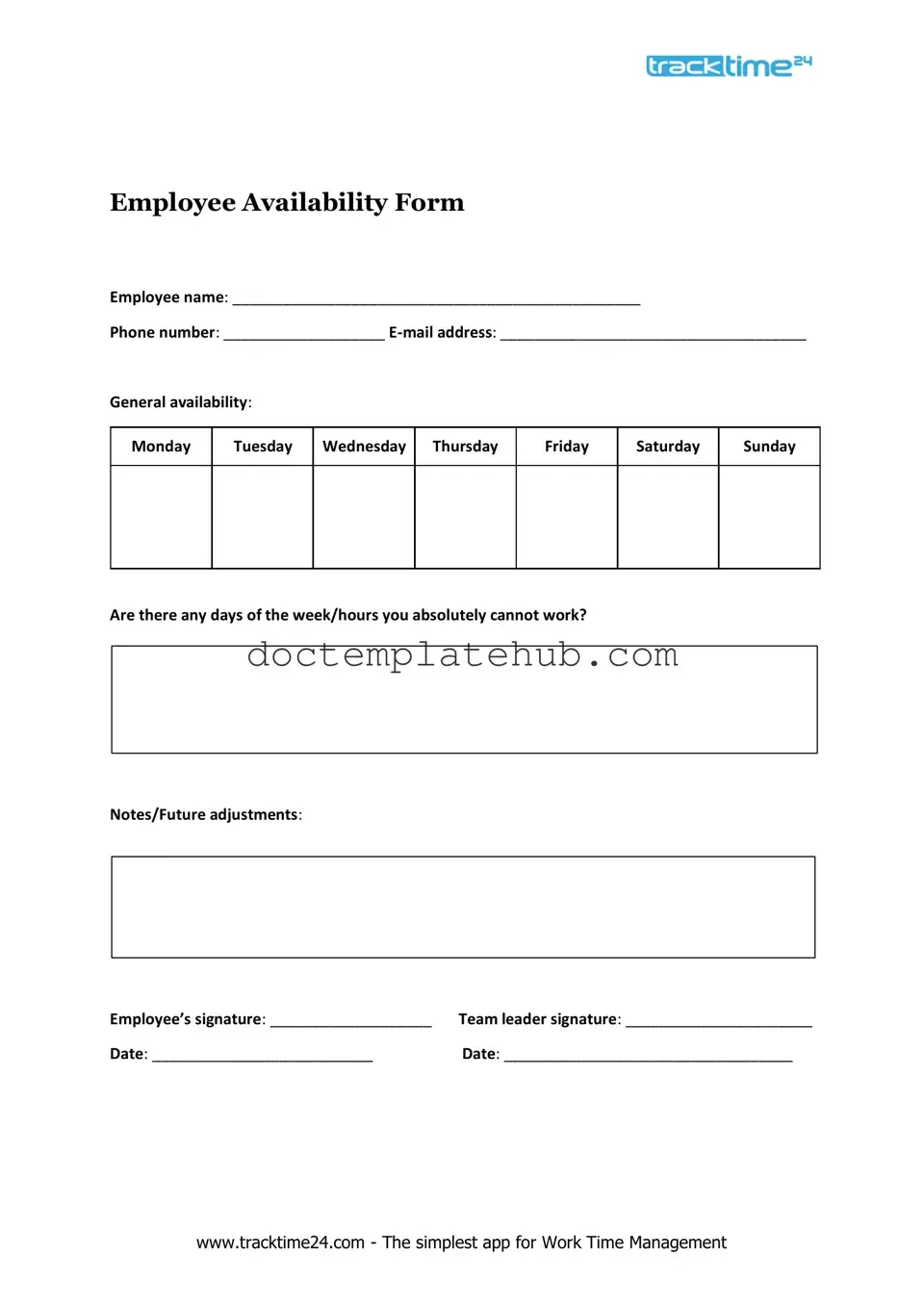What is the Employee Availability form?
The Employee Availability form is a document that allows employees to communicate their preferred working hours and days to their employer. It helps employers understand when employees are available to work, which can assist in scheduling shifts and managing workforce needs effectively.
Why is it important to fill out the Employee Availability form?
Completing the Employee Availability form is crucial for both employees and employers. For employees, it ensures that their preferred working times are taken into account, promoting a better work-life balance. For employers, it aids in creating schedules that align with employee availability, which can lead to increased productivity and job satisfaction.
How often should I update my availability?
It is advisable to update your availability whenever there are significant changes in your schedule, such as a new class schedule, a second job, or personal commitments. Regular updates ensure that your employer has the most current information, allowing for better scheduling decisions.
What if I need to change my availability after submitting the form?
If you need to change your availability after submitting the form, you should communicate directly with your supervisor or the HR department. Most employers understand that schedules can change, and they will typically have a process in place for submitting updated availability.
Can I request specific days off on the Employee Availability form?
Yes, many Employee Availability forms include sections where you can specify days off or indicate that you are unavailable on certain dates. Be sure to clearly mark any requests for time off to ensure that your employer is aware of your needs.
What happens if I don’t submit my availability?
If you do not submit your availability, your employer may schedule you based on their own needs without considering your preferences. This could lead to conflicts with your personal commitments or dissatisfaction with your work schedule. It’s always best to provide this information to avoid any misunderstandings.
Is the information on the Employee Availability form confidential?
Yes, the information provided on the Employee Availability form is typically treated as confidential. Employers use this information solely for scheduling purposes and to ensure that they respect employees’ time commitments. If you have concerns about privacy, it’s a good idea to discuss them with your HR department.
Who should I contact if I have questions about the form?
If you have questions about the Employee Availability form, you should reach out to your supervisor or the human resources department. They can provide clarification on how to fill out the form correctly and explain how your availability will be used in scheduling.
